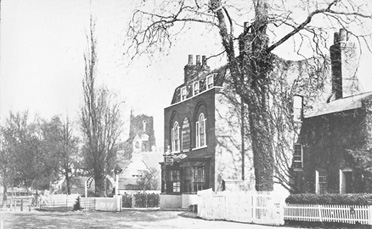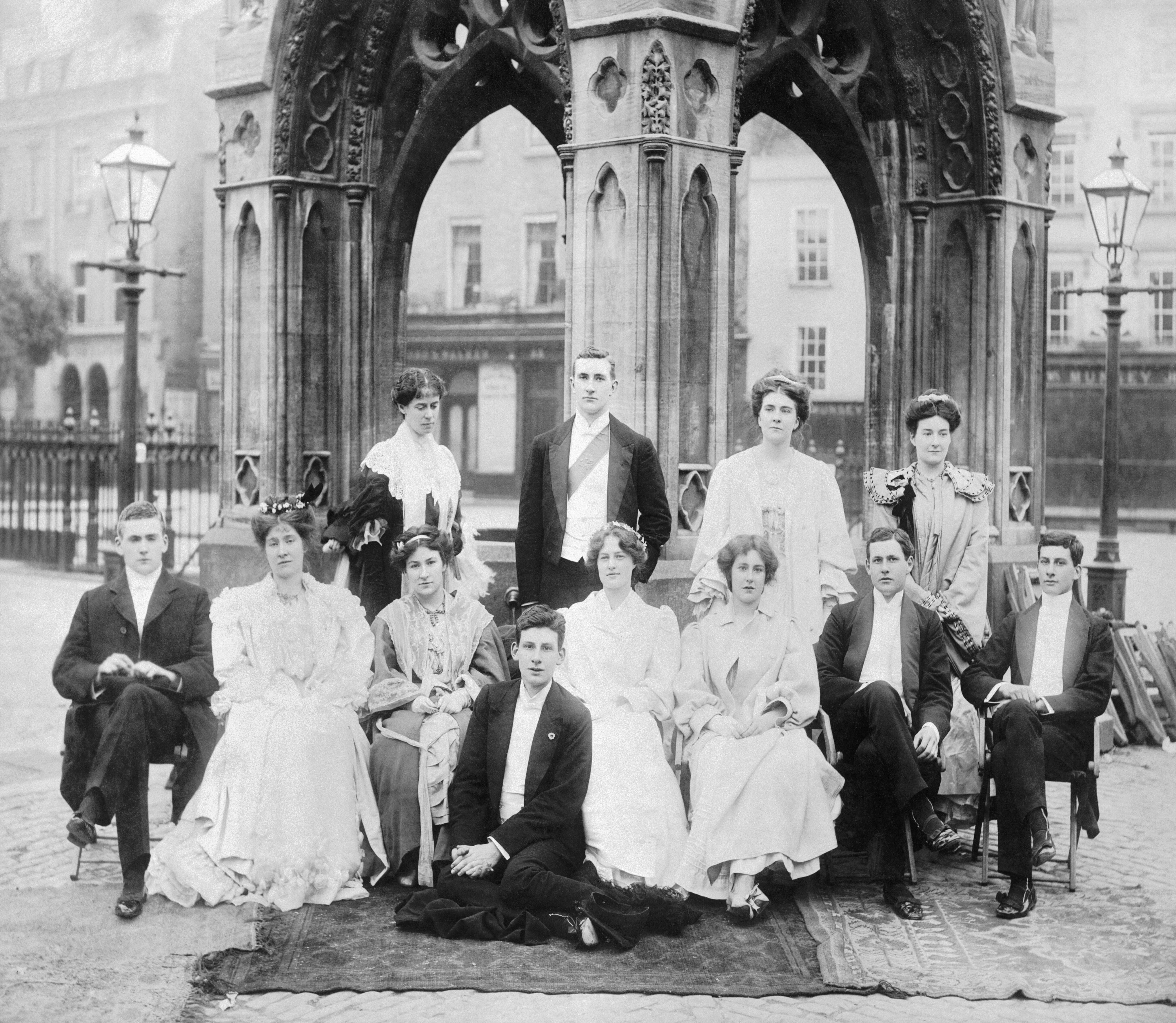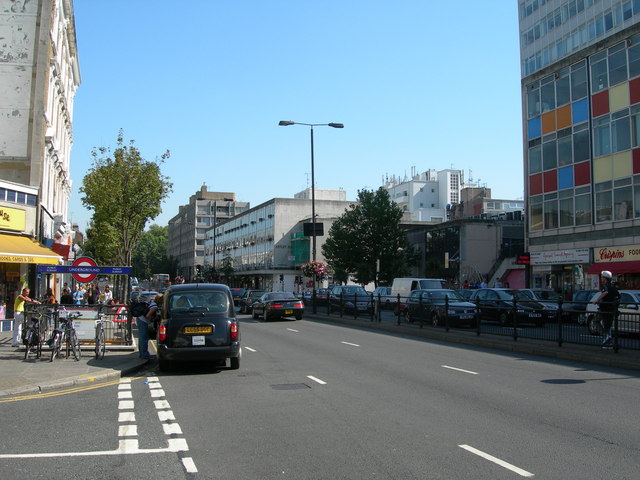|
Alfred Dunhill
Alfred Dunhill (30 September 1872 – 2 January 1959) was an English tobacconist, entrepreneur and inventor. He is the progenitor of Alfred Dunhill, Ltd. a London-based luxury goods company owned by Swiss company Richemont and the Dunhill tobacco products company owned by British American Tobacco (now two independently owned entities). From 1893 Dunhill ran a company selling motoring accessories, and in 1902 opened a shop in Mayfair. He developed a pipe designed for motorists in 1904. He opened a tobacconist's shop in St James's in 1907, offering tailored tobacco blends. Shops were opened in New York and Paris in the 1920s. With his international ambitions, Dunhill helped to create the modern luxury goods market. He retired from business in 1929, and married his mistress in 1945, following the death of his wife. Early life Dunhill was born on 30 September 1872 at 2 Church Path, Hornsey, Middlesex. He was the second son of five children of Henry Dunhill (1842–1901), a ma ... [...More Info...] [...Related Items...] OR: [Wikipedia] [Google] [Baidu] |
Hornsey
Hornsey is a district of north London, England in the London Borough of Haringey The London Borough of Haringey (pronounced , same as Harringay) is a London borough in North London, classified by some definitions as part of Inner London, and by others as part of Outer London. It was created in 1965 by the amalgamation o .... It is an inner-suburban, for the most part residential, area centred north of Charing Cross. It adjoins green spaces Queen's Wood and Alexandra Park, London, Alexandra Park to the north. Known locally as Hornsey Village (to avoid confusion with the original borough of Hornsey) it is London's oldest recorded village, first recorded in 1202, according to the Place Names of Middlesex. Locale Hornsey is relatively old, being originally a village that grew up along Hornsey High Street, at the eastern end of which is the churchyard and tower of the formeSt Mary's parish church which was first mentioned i1291 At the western end is Priory Park, Haringe ... [...More Info...] [...Related Items...] OR: [Wikipedia] [Google] [Baidu] |
Harrow On The Hill
Harrow on the Hill is a locality and historic village in the borough of Harrow in Greater London, England. The name refers to Harrow Hill, ,Mills, A., ''Dictionary of London Place Names'', (2001) and is located some half a mile south of the modern town of Harrow. The village dates back to early medieval times, built around the 11th-century St Mary's Church, and is the location of Harrow, St Dominic's and John Lyon schools. Etymology Etymology before 1398 derives from Harrow, & The Saxon Chronicles/The Peterborough Chronicle, which first recorded Harrow Hill in 767 as ''Gumeninga Hergae''. A suggested meaning is " heathen temple" of a tribe called the 'Gumeningas', sons of Gumen. One of the earliest recorded uses of the name is found in 1398 as ''Harrowe atte Hille''. The hill has historically been used as a place of pagan worship. It is alternatively explained to mean ''the church upon the hill''.Harrow on the Hill', The Environs of London: volume 2: County of Middlesex, ... [...More Info...] [...Related Items...] OR: [Wikipedia] [Google] [Baidu] |
Lighter
A lighter is a portable device which creates a flame, and can be used to ignite a variety of items, such as cigarettes, gas lighter, fireworks, candles or campfires. It consists of a metal or plastic container filled with a flammable liquid or compressed gas, a means of Combustion, ignition to produce the flame, and some provision for extinguishing the flame. Alternatively, a lighter can be powered by electricity, using an electric arc or heating element to ignite the target. History The first lighters were converted flintlock pistols that used gunpowder. In 1662 the Turkish traveller Evliya Çelebi visited Vienna as a member of an Ottoman diplomatic mission and admired the lighters being manufactured there: “Enclosed in a kind of tiny box are tinder, a steel, sulphur and resinous wood. When struck just like a firearm wheel the wood bursts into flame. This is useful for soldiers on campaign.” One of the first lighters was invented by a German chemist named Johann Wolfgang D� ... [...More Info...] [...Related Items...] OR: [Wikipedia] [Google] [Baidu] |
Bloomberg Businessweek
''Bloomberg Businessweek'', previously known as ''BusinessWeek'', is an American weekly business magazine published fifty times a year. Since 2009, the magazine is owned by New York City-based Bloomberg L.P. The magazine debuted in New York City in September 1929. Bloomberg Businessweek business magazines are located in the Bloomberg Tower, 731 Lexington Avenue, Manhattan in New York City and market magazines are located in the Citigroup Center, 153 East 53rd Street between Lexington and Third Avenue, Manhattan in New York City. History ''Businessweek'' was first published based in New York City in September 1929, weeks before the stock market crash of 1929. The magazine provided information and opinions on what was happening in the business world at the time. Early sections of the magazine included marketing, labor, finance, management and Washington Outlook, which made ''Businessweek'' one of the first publications to cover national political issues that directly impacted the b ... [...More Info...] [...Related Items...] OR: [Wikipedia] [Google] [Baidu] |
Siegfried Sassoon
Siegfried Loraine Sassoon (8 September 1886 – 1 September 1967) was an English war poet, writer, and soldier. Decorated for bravery on the Western Front, he became one of the leading poets of the First World War. His poetry both described the horrors of the trenches and satirised the patriotic pretensions of those who, in Sassoon's view, were responsible for a jingoism-fuelled war. Sassoon became a focal point for dissent within the armed forces when he made a lone protest against the continuation of the war in his "Soldier's Declaration" of 1917, culminating in his admission to a military psychiatric hospital; this resulted in his forming a friendship with Wilfred Owen, who was greatly influenced by him. Sassoon later won acclaim for his prose work, notably his three-volume fictionalised autobiography, collectively known as the "Sherston trilogy". Early life Siegfried Sassoon was born to a Jewish father and an Anglo-Catholic mother, and grew up in the neo-gothic man ... [...More Info...] [...Related Items...] OR: [Wikipedia] [Google] [Baidu] |
Winston Churchill
Sir Winston Leonard Spencer Churchill (30 November 187424 January 1965) was a British statesman, soldier, and writer who served as Prime Minister of the United Kingdom twice, from 1940 to 1945 Winston Churchill in the Second World War, during the Second World War, and again from 1951 to 1955. Apart from two years between 1922 and 1924, he was a Member of Parliament (United Kingdom), Member of Parliament (MP) from 1900 to 1964 and represented a total of five UK Parliament constituency, constituencies. Ideologically an Economic liberalism, economic liberal and British Empire, imperialist, he was for most of his career a member of the Conservative Party (UK), Conservative Party, which he led from 1940 to 1955. He was a member of the Liberal Party (UK), Liberal Party from 1904 to 1924. Of mixed English and American parentage, Churchill was born in Oxfordshire to Spencer family, a wealthy, aristocratic family. He joined the British Army in 1895 and saw action in British Raj, Br ... [...More Info...] [...Related Items...] OR: [Wikipedia] [Google] [Baidu] |
Edward VIII
Edward VIII (Edward Albert Christian George Andrew Patrick David; 23 June 1894 – 28 May 1972), later known as the Duke of Windsor, was King of the United Kingdom and the Dominions of the British Empire and Emperor of India from 20 January 1936 until Abdication of Edward VIII, his abdication in December of the same year. Edward was born during the reign of his great-grandmother Queen Victoria as the eldest child of the Duke and Duchess of York, later King George V and Mary of Teck, Queen Mary. He was created Prince of Wales on his 16th birthday, seven weeks after his father succeeded as king. As a young man, Edward served in the British Army during the First World War and undertook several overseas tours on behalf of his father. While Prince of Wales, he engaged in a series of sexual affairs that worried both his father and then-British prime minister Stanley Baldwin. Upon Death and state funeral of George V, his father's death in 1936, Edward became the second monarch of the ... [...More Info...] [...Related Items...] OR: [Wikipedia] [Google] [Baidu] |
Royal Warrant Of Appointment (United Kingdom)
Royal warrants of appointment have been issued since the 15th century to those who supply goods or services to a royal court or certain royal personages. The warrant enables the supplier to advertise the fact that they supply to the royal family, thereby lending prestige to the brand and/or supplier. In the United Kingdom, grants are currently made by the two most senior members of the British royal family to companies or tradespeople who supply goods and services to individuals in the family. Suppliers continue to charge for their goods and services – a royal warrant of appointment does not imply that they provide goods and services free of charge. The warrant is typically advertised on billboards or company hoardings in British English, letter-heads and products by displaying the coat of arms or the heraldic badge of the royal personage as appropriate. Underneath the coat of arms will usually appear the phrase "By Appointment to..." followed by the title and name of the roy ... [...More Info...] [...Related Items...] OR: [Wikipedia] [Google] [Baidu] |
Campden Hill Road
Campden Hill Road is a street in Kensington, London W8. It runs north to south from Notting Hill Gate to Kensington High Street. History Campden Hill Road was originally called Plough Lane. By 1879, William Abbott, a stockbroker, "held the lease of the site between Phillimore Walk, Campden Hill Road, and Hornton Street". Notable residents include the novelist Ford Madox Ford (1873–1939) who lived at no 80, the poet Cecil Day-Lewis, with his children, including the actor Sir Daniel Day-Lewis and wife Jill Balcon, and the publisher Andrew White Tuer (1838–1900). Anglo-American landscape painter George Henry Boughton (1834-1905) lived and died at No. 118, West House, in a house built for him. The Kensington Central Library Kensington Central Library is a Grade II* listed building on Hornton Street and Phillimore Walk, Kensington, London. It was built in 1958–60 by the architect E. Vincent Harris on the site of The Abbey, a Gothic house which had been construc . ... [...More Info...] [...Related Items...] OR: [Wikipedia] [Google] [Baidu] |
Notting Hill Gate
Notting Hill Gate is one of the main thoroughfares of Notting Hill, in the Royal Borough of Kensington and Chelsea. Historically the street was a location for toll gates, from which it derives its modern name. Location At Ossington Street/Kensington Palace Gardens, the Bayswater Road becomes Notting Hill Gate, continuing westward until it becomes Holland Park Avenue, just before it reaches Ladbroke Grove. Notting Hill Gate is distinct from Notting Hill, although the two are often confused, with "Notting Hill" being used as an abbreviation of "Notting Hill Gate" and "Notting Hill Gate" suggesting to outsiders that it is the full description of Notting Hill. In fact, however, the street named Notting Hill Gate is well to the south of the hill (with its summit at the junction of Ladbroke Grove and Kensington Park Gardens) which gives its name to the area known (long before the establishment of the Notting Hill toll gate) as Notting Hill. Character Notting Hill Gate is home ... [...More Info...] [...Related Items...] OR: [Wikipedia] [Google] [Baidu] |
Dunkirk Evacuation
The Dunkirk evacuation, codenamed Operation Dynamo and also known as the Miracle of Dunkirk, or just Dunkirk, was the evacuation of more than 338,000 Allied soldiers during the Second World War from the beaches and harbour of Dunkirk, in the north of France, between 26 May and 4 June 1940. The operation commenced after large numbers of Belgian, British, and French troops were cut off and surrounded by German troops during the six-week Battle of France. In a speech to the House of Commons, British Prime Minister Winston Churchill called this "a colossal military disaster", saying "the whole root and core and brain of the British Army" had been stranded at Dunkirk and seemed about to perish or be captured. In his "We shall fight on the beaches" speech on 4 June, he hailed their rescue as a "miracle of deliverance". After Germany invaded Poland in September 1939, France and the British Empire declared war on Germany and imposed an economic blockade. The British Expeditionary ... [...More Info...] [...Related Items...] OR: [Wikipedia] [Google] [Baidu] |
Lady Gay
The word ''lady'' is a term for a girl or woman, with various connotations. Once used to describe only women of a high social class or status, the equivalent of lord, now it may refer to any adult woman, as gentleman can be used for men. Informal use is sometimes euphemistic ("lady of the night" for prostitute) or, in American slang, condescending in direct address (equivalent to "mister" or "man"). "Lady" is also a formal title in the United Kingdom. "Lady" is used before the family name of a woman with a title of nobility or honorary title ''suo jure'' (in her own right), or the wife of a lord, a baronet, Scottish feudal baron, laird, or a knight, and also before the first name of the daughter of a duke, marquess, or earl. Etymology The word comes from Old English '; the first part of the word is a mutated form of ', "loaf, bread", also seen in the corresponding ', "lord". The second part is usually taken to be from the root ''dig-'', "to knead", seen also in dough; the s ... [...More Info...] [...Related Items...] OR: [Wikipedia] [Google] [Baidu] |








